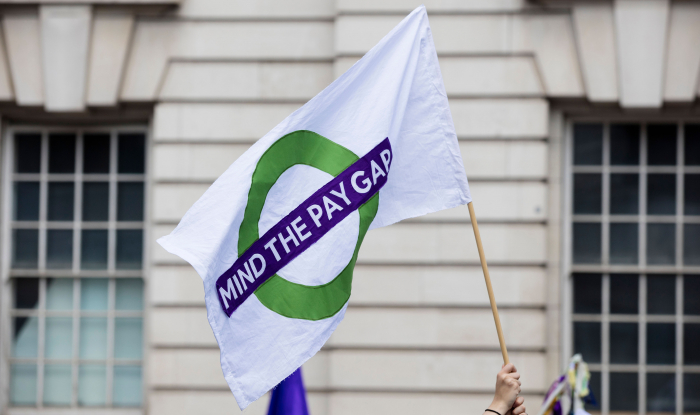Nearly four years after consulting on the topic, the Government has finally published guidance on ethnicity pay gap reporting, albeit on a voluntary basis. In addition to making gender pay gap reporting compulsory from April 2017 (for employers of 250 or more people), the Government had also originally intended to mandate ethnicity pay gap reporting. Its consultation, conducted in the winter of 2018/19, attracted 321 responses; however, further progress subsequently stalled: the Government’s response to the consultation has yet to be published and any formal commitments in this regard were absent from the Conservatives’ 2019 election manifesto.
Nonetheless, a push for mandatory ethnicity pay gap reporting persisted, receiving further support from the Women and Equalities Committee in February 2022. The Committee heard evidence from representative bodies including Business in the Community, the CIPD and the TUC, who suggested that concerns around employees’ potential unwillingness to disclose ethnicity data might be addressed by businesses communicating why they need this information and what they will use it for. The TUC also claimed that the current arrangement of voluntary reporting was unfair to business as it ‘just undercuts good employers who want to do this stuff, especially if there are costs to it, in our highly competitive market.’ (Employers that have voluntarily published their ethnicity pay gaps figures in recent years include Network Rail, the British Heart Foundation, Barnardos, PwC UK and Sainsbury's.)
Despite the Committee’s recommendation, the Government stopped short of mandating ethnicity pay gap reporting, regarding it as ‘just one type of tool to assist employers in creating a fairer workplace.’ It was also cautious about imposing new reporting burdens on businesses as they recover from the pandemic. Instead, last month saw the publication of government guidance intended to ‘give employers the tools to understand and tackle pay gaps within their organisations and build trust with employees’, as well as promoting greater consistency in reporting, on a voluntary basis. While it may have its origins in the proposals first mooted in the 2017 election manifesto, the publication of this guidance was prompted primarily by a recommendation from the Commission on Race and Ethnic Disparities, chaired by Dr Tony Sewell, as part of a wider-ranging exercise looking at the drivers of racial disparities across British society. The Sewell report did not recommend introducing legislation on ethnicity pay gap reporting, partly on the basis of what the report argues is the problem of unreliable sample sizes, but it did recommend that the Government support employers that choose to publish their pay gaps by producing guidance in this area.
The guidance explains how employers can report on their ethnicity pay gaps and in particular how to: collect employees’ ethnicity data; gather the required payroll data for ethnicity pay calculations; make ethnicity pay calculations; analyse and understand the results of these calculations; and develop an employer action plan to address any identified disparities. As part of this, it suggests possible reasons (both internal and external) why an ethnic group might be underrepresented in an organisation and encourages employers to consider how they might mitigate the impact of this.
The methodology outlined in the guidance seeks to mirror the approach set out for gender pay gap reporting wherever possible, with a view to minimising the need for employers to follow separate processes for collecting pay data. However, it also highlights the complexity of ethnicity pay reporting relative to gender pay reporting, involving as it does a comparison between multiple ethnic groups (depending on how ethnically diverse the workforce is) rather than just two groups of staff (women and men). There may also be issues of reliability and confidentiality to take into consideration and the guidance aims to provide high-level guidance on how to approach balancing the two.
On confidentiality, it encourages employers to refer to the Race Disparity Unit's standards for collecting ethnicity data and to base questions on those used in the latest censuses, using detailed ethnicity classifications wherever possible and giving staff a clear option not to respond. The Sewell report had raised some concerns around the reliability of analysing smaller workforces by the 18 ONS ethnicity classifications – especially in organisations that draw staff from geographical areas with a low ethnic minority population. On this latter point, the guidance recommends comparing workforce data against local ethnicity population data, based on 2021 census results, to help determine whether the makeup of an employer’s workforce is similar to their local area or whether there are other factors driving differences in pay. It recommends a minimum category size of between five and 20 employees for internal reporting purposes (where the primary concern is not disclosing information about individual employees) and 50 employees if the analysis is to be published externally, both to preserve anonymity and ensure statistical robustness. While the guidance encourages employers to show as many ethnicity categories as possible in the analysis, to give a richer picture and better inform action plans, in order to achieve the required sample sizes it suggests it may be necessary to aggregate to five larger ethnic groups (Asian; black; mixed; white; other) as well as ‘prefer not to say’. However, this may risk masking differences between ethnic minority groups – the guidance gives the example of Bangladeshi and Pakistani employees, who generally earn less than those from the Indian ethnic group; combining all three groups into a broader ‘Asian’ category would conceal these complexities. Aggregating to just two groups (‘white’ and ‘all other ethnic minorities’) is discouraged, as it risks further obscuring the true picture, but is suggested as a starting point for smaller employers or those with only a small number of staff in certain ethnic groups, with a view to monitoring the situation and undertaking more granular analysis in future years.
While the guidance aims ‘to develop a consistent, methodological approach to ethnicity pay reporting, which can then lead to meaningful action, while remaining proportionate and without adding undue burdens on business’, it also states that ‘where possible, the approach and the calculations should be checked with analysts’.

